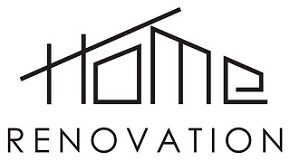
What Causes Backflow and How to Prevent It
The water that comes to your home should be a one-way flow only. But sometimes, this might not be the case. A backflow may happen. Backflow is when contaminated water has reversed flow and entered clean water lines. It can happen at any cross-connection between clean and dirty water lines. It is typically caused by a change in water pressure.
Backflow is a serious plumbing issue that needs to be addressed immediately because the contaminated water may contain hazardous materials such as chemicals, pesticides, or human waste, posing a serious health concern. This plumbing issue can be detected by performing backflow testing Long Beach.
Well, but what causes backflow, and how can it be prevented? Let’s find out as we discuss these and much more in this blog.
Let’s get started!
Causes of backflow
Here are the possible causes of backflow:
Backpressure
Backpressure is one of the most common causes of backflow. It happens when the pressure inside the pipes pushes water in the opposite direction. This typically happens when water heaters are not supplied with enough outlets or vents. The pressure then starts to rise when the water is being heated. That can push the water backward.
Back siphonage
Another common cause of backflow is back siphonage. This occurs when there is a loss of pressure in the clean water supply. This causes contaminated water to be sucked backward. It is worth noting that back siphonage backflow often occurs if a water main breaks or if a large quantity of water is being used, like in the case of firefighting.
Prolonged power breakdown
A prolonged power breakdown can also cause backflow because it can result in the growth of bacteria in the plumbing system. Of course, water in a storage tank can stay still, promoting the growth of bacteria. If this happens in the tank with hot water, it can erupt the scalding of hot water when you take a bath or shower.
In the event of an outage due to fire and other disasters, abrupt surges of water filtering through your area’s water supply can create the environment for backflow to re-enter your home’s water supply if you don’t have the proper breakers in place.
How to prevent backflow
Even though the backflow threat sounds quite worrying, there are plenty of ways to prevent this plumbing issue so it doesn’t cause a health issue for you and your loved ones. However, it’s only a professional who can help in implementing these preventive tips. Here are tips for preventing backflow:
Air gap: this simple solution involves creating an open space between devices that connect to your plumbing system and the pipes themselves. This gap can help your plumbing system maintain the appropriate pressure levels, thereby preventing backflow from easily happening.
Backflow preventer valve: this is a device that can be used to prevent backflow. The valve is typically installed in your plumbing system, and it stops backflow from entering your home’s water source. If the pressure exceeds or drops the water supply, it reverses the flow to prevent any backflow from happening. The device can be installed at any location in the plumbing system where there is a risk of contaminated water flowing backward into your clean water supply.


